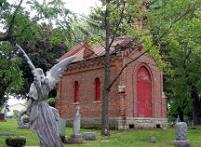
Allouez Cemetery Chapel, Allouez
In the heart of the Allouez Catholic Cemetery sat a historic gem referred to as the Red Chapel.
Bishop Francis Xavier Krautbauer had the chapel built in 1876 about the time he commissioned the building of St. Francis Xavier Cathedral located at 140 South Monroe Avenue.
The red brick chapel was an admirable example of Romanesque Revival architecture. Although less ornate than the cathedral there were similarities between the chapel and the cathedral’s brickwork. The Bishop built the chapel to enclose the remains of his predecessor Bishop Melcher. On December 20, 1877, a Pontifical Requiem Mass commemorated the completion of the red brick chapel and the 4th anniversary of Bishop Melcher’s death. Following the mass carriages proceeded to Allouez Catholic Cemetery where Krautbauer dedicated the chapel and placed Melcher’s casket in the vault. The Chapel entombed Bishop Melcher for nearly 40 years until 1915 when his remains were removed to the nearby Mausoleum built for Bishop Joseph J. Fox. For years the chapel stood abandoned among the century old tombstones. In April 2016, the Catholic Diocese of Green Bay’ shared their plans to demolish the building. Public outcry and appeals to save the chapel culminated in the creation of a “Save the Red Chapel” group. The Diocese agreed to the group raising funds for preservation work with many stipulations. A structural report got the project underway. Donors, restoration experts, brick and stone masons came forward to assist. Unfortunately, the group was unable to meet all the requirements and raise the needed funds in the time allotted. On July 26, 2023, the chapel was demolished. Before photo courtesy of Jeanne Biebel.
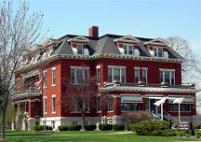
The former Chancery (Bishop’s Residence), Green Bay
This fine architectural gem on Webster Avenue was constructed in 1911 as the official residence for the Bishop of the Green Bay Diocese, and served that purpose until the 1970s, when the residence was moved to a more modern house to the west. The former Chancery was then used as offices and record storage until November 2009, when those uses were moved to another building and the building was vacated.
In December 2009, a “For Sale by Owner” sign was placed in front of the building. 6 months later, the Diocese announced that it was planning to demolish the building. In response, an impressive grass roots preservation coalition immediately formed to raise awareness of the building’s plight. Partnering with the Wisconsin Trust for Historic Preservation, the group worked to locate a viable buyer and raise money to buy the building themselves. However, in September 2010, the Diocese decided to proceed with the demolition. Before photo courtesy of Jeanne Biebel.
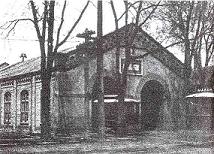
Green Bay Trolley Barn
In 1900, this building was constructed on South Washington Street to house the trolley cars of the Fox River Electric Company, whose lines ran from De Pere through Green Bay to Duck Creek. In later years, the building served as the transit garage for the city buses. While the original facade had been partially obscured by several additions and alterations, the building still retained its distinctive exterior cornice and its impressive timber roof trusses. With the construction of the new bus terminal and garage on University Avenue, the old car barn was demolished in 2002.
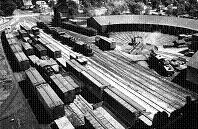
Green Bay & Western Norwood Yards, Green Bay
After establishing itself as a railroad in 1896, the Green Bay and Western Railroad built its Norwood Street yard and shop facilities in 1898. The buildings, which served as the operational headquarters of the railroad, included the turntable and roundhouse for the maintenance and repair of railroad cars and locomotives. The assortment of tracks was used to sort cars and assemble the trains, while the adjacent grain elevator (from which this photograph was taken) was used to store and load grain to be transported to other cities. When the Wisconsin Central purchased the GB&W in the early 1990s, it decided that the yard was redundant, leading to its disuse and the eventual demolition of the buildings.
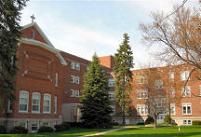
Holy Cross Convent, Bay Settlement
While the Holy Cross church complex in Bay Settlement was recently placed on the National Register of Historic Places, the convent operations were moved to a nearby newly constructed building. After a new use could not be found for the building, it was demolished in 2012. Photo courtesy of Jeanne Biebel.
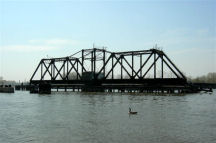
Railroad Bridge & Turntable, Green Bay
The former Porlier Street railroad bridge that crosses over the Fox River in Green Bay has not been used for some time. The bridge consisted of east and west approaches to a turntable that allowed river traffic to pass through. Each of the approaches has been damaged by arson, and the east approach has since been converted to a shortened fishing pier. The turntable now stands isolated as a relic of a former era of railroading. The Railroad Bridge and Turntable was demolished in 2014. Photo courtesy of Jeanne Biebel.
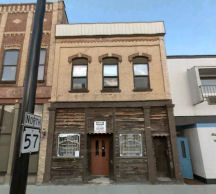
Shier Building, East De Pere
The former Carol Shier Building at 129 South Broadway in De Pere was demolished and replaced with parking for the new Walgreens.
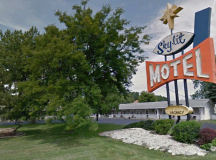
Sky-Lit Motel, Ashwaubenon
This small motel is defined by their iconic 1950s era roadside sign. Before construction of the present-day highway to the west, Ashland Avenue served as the Highway 41 entrance from the south into Green Bay’s west side, and this sign greeted generations of Packer fans and city visitors. The motel was demolished in 2015, and the iconic sign has been salvaged for parts.
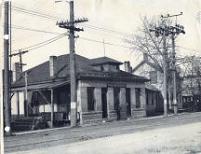
WPS Substation, Wrightstown
Built in the early 1900s and later owner by Wisconsin Public Service, this substation in Wrightstown generated power and served as the Wrightstown depot for the Interurban Trolley from Green Bay to Fond du Lac. The building was torn down in March 2015.
